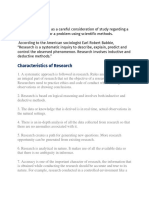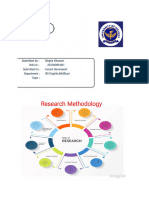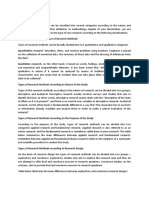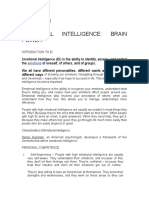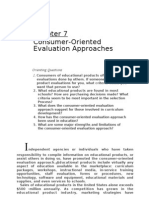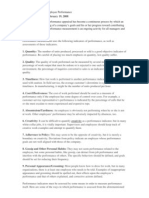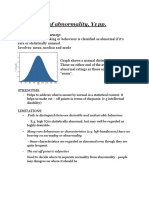0% found this document useful (0 votes)
294 views18 pagesIntroduction To Types of Research Methodology
This document provides an introduction and overview of different types of research methodology. It discusses 9 main types of research methodology:
1. Quantitative and Qualitative Research - The two primary categories based on whether research relies on numerical data or non-numerical elements.
2. Descriptive and Analytical Research - Categorized based on whether research describes characteristics of the population/issue or analyzes facts to form hypotheses.
3. Applied and Fundamental Research - Distinguishes between research aimed to solve current problems versus discover new theories.
4. Exploratory and Conclusive Research - The former seeks to increase understanding while the latter intends to answer research questions definitively.
5. Primary and
Uploaded by
Ana LopezCopyright
© © All Rights Reserved
We take content rights seriously. If you suspect this is your content, claim it here.
Available Formats
Download as PDF, TXT or read online on Scribd
0% found this document useful (0 votes)
294 views18 pagesIntroduction To Types of Research Methodology
This document provides an introduction and overview of different types of research methodology. It discusses 9 main types of research methodology:
1. Quantitative and Qualitative Research - The two primary categories based on whether research relies on numerical data or non-numerical elements.
2. Descriptive and Analytical Research - Categorized based on whether research describes characteristics of the population/issue or analyzes facts to form hypotheses.
3. Applied and Fundamental Research - Distinguishes between research aimed to solve current problems versus discover new theories.
4. Exploratory and Conclusive Research - The former seeks to increase understanding while the latter intends to answer research questions definitively.
5. Primary and
Uploaded by
Ana LopezCopyright
© © All Rights Reserved
We take content rights seriously. If you suspect this is your content, claim it here.
Available Formats
Download as PDF, TXT or read online on Scribd
/ 18


